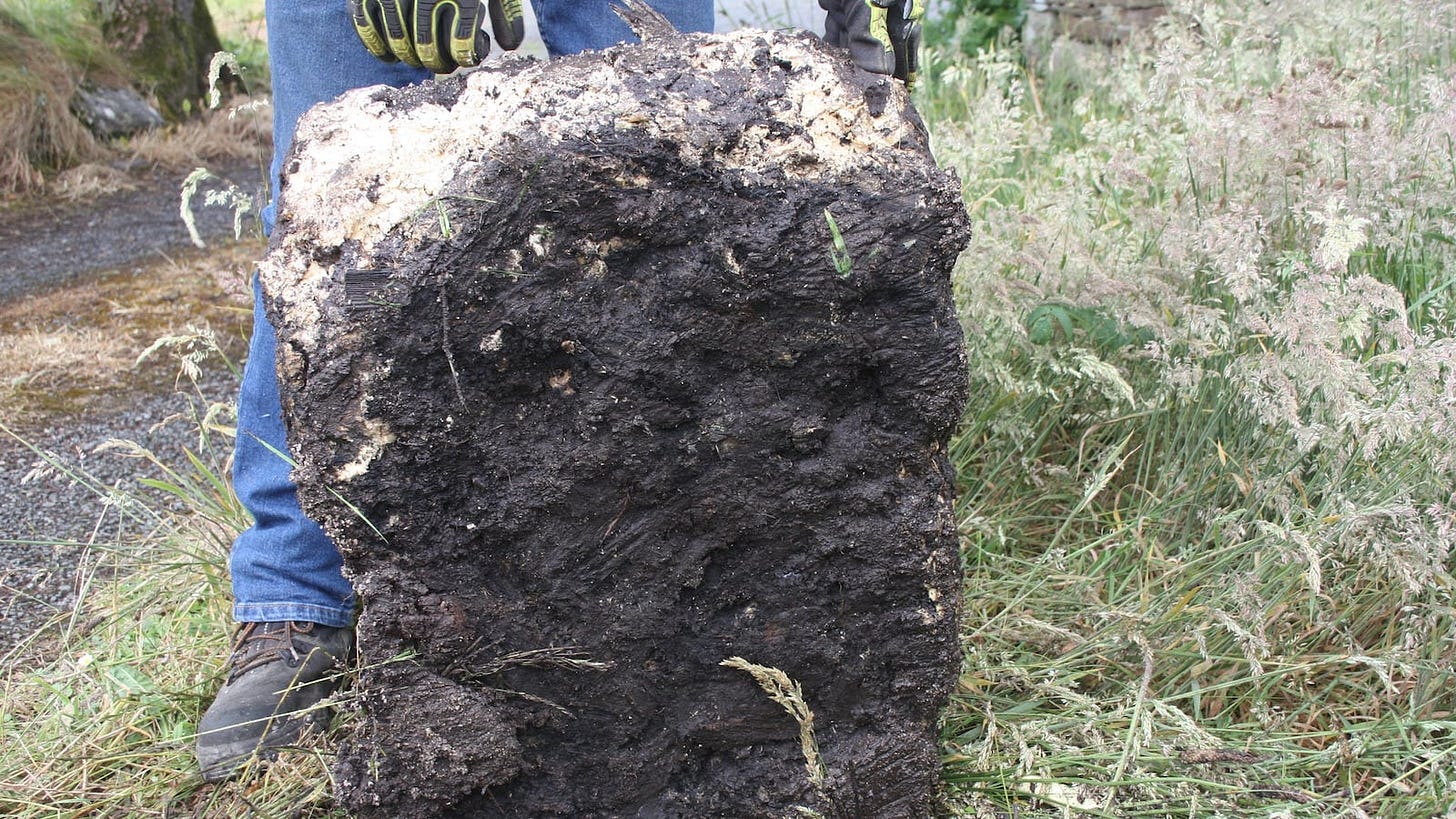”Passenger measure your time, for time is the measure of your being”
-inscription on the Shandon Bells, Cork, Ireland
There’s something special about bog butter: butter that’s sometimes centuries old, buried in a bog only to be unearthed, often by surprise, at a later date. We don’t have exact dates for when people started burying bog butter: But the earliest examples from Ireland and Scotland are thought to be from the Middle Iron Age (400-350 BCE).
Bog butter captures our imaginations, connects us to history (literally: since the butter of the past wouldn’t reach us otherwise), and thus gives us access to the everyday lives of our ancestors in a way that’s often impossible.
Bog butter is not the only buried-then-unearthed food we encounter from past communities (other examples, though not all in an edible state, include bread in Turkey, wine in China, a Dene cache in Alaska, banana dough in Ethiopia, and many other examples besides). But it’s always been an obsession of mine, in part because bog butter actually emerges as butter. Not as remnants of butter left behind on something else. But as a still-buttery (though often much more…intensely flavored) complete food.
(An exciting aside: I can’t share details yet BUT there is a chance that I, in tandem with a group of wonderful other creative folks, will be burying our very own bog butter in an Irish bog. More details when and if this comes to fruition!)
Time is the measure of your being (and your butter)
Bog butter asks us to reimagine time: To take what’s perishable and stretch it out to decades and centuries. To see how the ephemeral bits of the past sometimes wind their way to meet us here in the future. To perhaps even inspire us to ask how our own ephemeral lives might weave into the future, too.
To embrace the preservative and nourishing power of going underground: In a practical sense (burying in bogs or storing things in root cellars do both extend shelf life) and a metaphorical one (the unexamined life, etc.)
And it asks us to acknowledge the ingenuity of our ancestors, by offering evidence of the practices they used, and shared, to stay alive (and to make our living possible today). Bog butter is a tangible connection with the past: something shaped by hands long since departed.

In one of my recent short stories (which I’ll be sharing with you in a future issue) I imagined the traces of use we leave behind when we make butter: Impressions from fingers, maybe the texture of the material wrapped around the butter, now stamped upon its surface. The bacteria, who helped to culture the butter, who also leave their traces on this tiny microclimate, a world within the larger world of the bog.
Bog butter is a record of the everyday magic of living. It’s a record of real lives whose daily existence (or whose existence in general) might otherwise not be recorded. Even if we don’t know who buried the butter, the butter is there. It also asks us to expand our imaginations around this food: Which, as a fat-rich substance, could also be used for other purposes like waterproofing in addition to eating.
The butter stands as a witness to the hands that made it, to the animals whose milk served as its base, and to the land that carried it forward so we could encounter it today.
So why did people make and bury bog butter (and is anyone still making it today)?
And, what does it taste like?
Mapping bog butter: A history of time and place
Keep reading with a 7-day free trial
Subscribe to Root: Historic Food for the Modern World to keep reading this post and get 7 days of free access to the full post archives.


